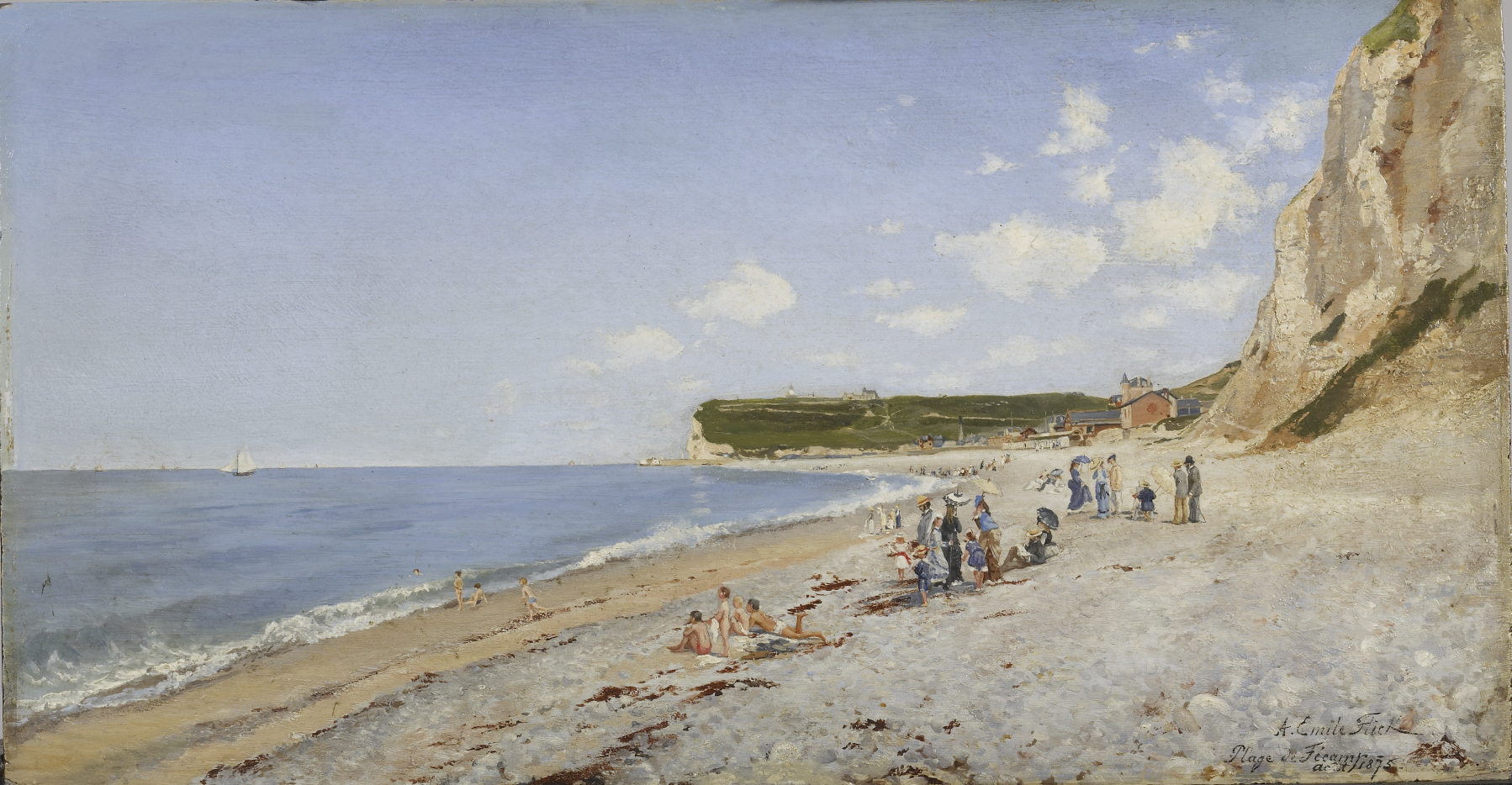The Beach at Fécamp
(18th and 19th Centuries )
Flick exhibited at the Paris Salons between 1870 and 1882. Although not a member of the impressionist group, he shared with them an interest in painting outdoors. His technique, however, with its attention to exacting detail, was more related to the academic polish of J.-L.-E. Meissonier.
Like Boudin, Flick shows vacationers enjoying the pleasures of the beach, a recreational pastime that became popular in the second half of the 19th century. Among the figures included in this scene is an artist at his easel. At the right steep, sandy cliffs border the beach and continue into the distance. The sky is bright blue and streaked with white clouds, and the water, also a brilliant blue, contrasts with the soft yellow of the sand.
Inscription
Provenance
Provenance (from the French provenir, 'to come from/forth') is the chronology of the ownership, custody, or location of a historical object. Learn more about provenance at the Walters.
Shepherd Gallery Associates, New York; Walters Art Museum, October 1989, by purchase.
Exhibitions
| 2014-2016 | From Rye to Raphael: The Walters Story. The Walters Art Museum, Baltimore. |
| 2008-2009 | The Road to Impressionism: Barbizon Landscapes from the Walters Art Museum. The Dixon Gallery and Gardens, Memphis; The Frick Art & Historical Center, Pittsburgh. |
| 2004-2005 | The Road to Impressionism: Landscapes from Corot to Manet. The Walters Art Museum, Baltimore. |
Measurements
Framed H: 14 3/8 × W: 21 7/8 × D: 2 15/16 in. (36.5 × 55.5 × 7.5 cm)
Credit Line
Museum purchase, 1989
Location in Museum
Not on view
Accession Number
In libraries, galleries, museums, and archives, an accession number is a unique identifier assigned to each object in the collection.
In libraries, galleries, museums, and archives, an accession number is a unique identifier assigned to each object in the collection.
37.2641


